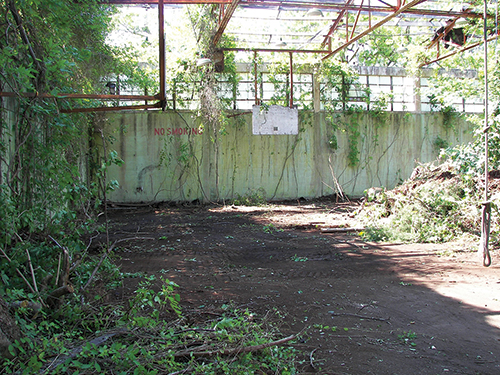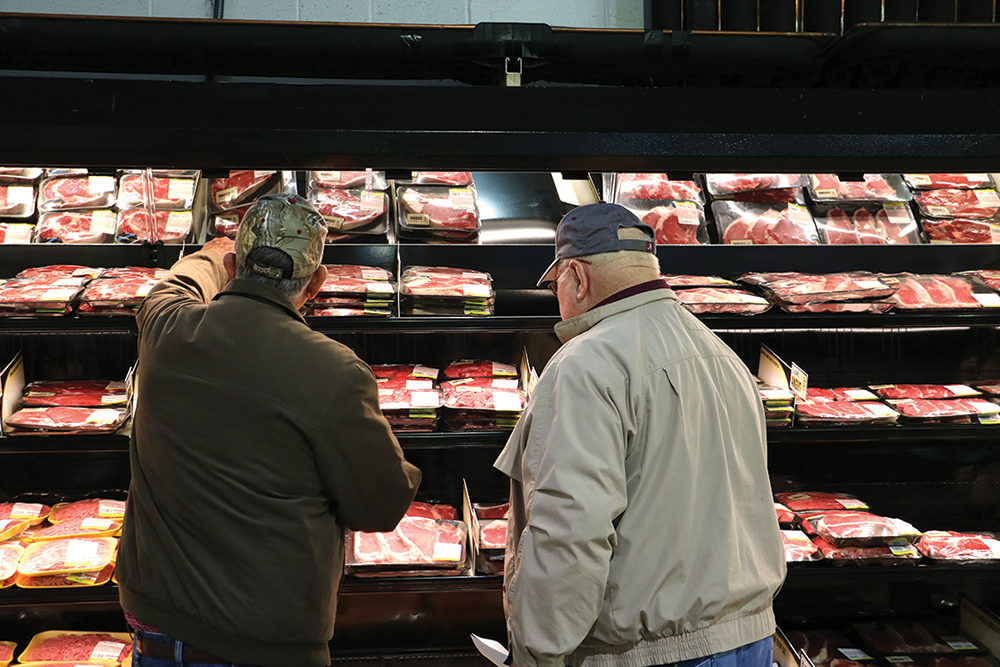West Alabama town’s abandoned gym has new life, thanks to supermarket

By Jim Plott
You can’t toss a basketball inside the Marengo County High School gym anymore, but you can find the ingredients for a tossed salad – and a steak and potato to go along with it if you like.
Although the refurbished basketball goals remain positioned on each wall as vivid reminders of the glory years of the green and white Marengo County Tigers, these days the gym is known as Dave’s Market, a full-fledged supermarket. And that, as far as everyone in the town of Thomaston is concerned, is a victory of its own.
Before the grocery opened in February, the Marengo County town had gone 20 years without a grocery store, requiring residents to drive 15 to 20 miles to pick up fresh produce or a jumbo size box of laundry detergent.
“It’s like having a refrigerator in your backyard,” said local resident Dorothy Murray on the store’s opening day.
It all spells good news for a town with a large elderly population and where golf carts are one of the main modes of transportation; they make up much of the town’s Christmas parade.
“We have an older population that depends on somebody else to take them to a grocery store and this gives them a new sense of independence,” says Mayor Jeff Laduron. “It’s also going to be a tremendous lifesaver for this small town. We needed desperately to have some revenue to operate the town and provide services and this is going to help.”

Closed since the 1980s
A few years before, the gym was destined to be dismantled, leaving only a pile of rubble and a heap of memories. Closed along with the school in the 1980s, the gym over the decades had fallen in decay and more resembled a greenhouse with vegetation and trees growing inside.
It was so dilapidated that it was not even considered when Laduron and Brenda Tuck, director of the Marengo County Economic Development Authority, began meeting more than two years ago with David Oliver, owner of Dave’s Market in Valley Grande in Dallas County, to encourage him to locate a second Dave’s Market in Thomaston. The main school building, although with lesser structural deficiencies, did not fit the layout needs for a grocery store. Both buildings are owned by the town.
That changed when a land deal fell through.
“I brought a contractor with me and he said it could be done,” says Oliver, who started in the grocery business 50 years ago bagging groceries and mopping floors.
As fortune would have it, the roots of the brush and trees had not penetrated the concrete floor and they were easily removable.
The town, as part of the agreement, turned the deed to the gym over to Oliver, who began the nearly year-long process of converting it into a grocery store. The town was able to obtain grants, assistance and guidance from the USDA Rural Development, the Delta Regional Authority, the Alabama Department of Economic and Community Affairs, the Alabama Tombigbee Regional Commission, and the Marengo County Commission. The town also brought its industrial development board out of hibernation to help fulfill the project.
“Patience and partnerships are what it takes in rural communities to be able to move forward,” Tuck says. “(Oliver) saw potential there and the town was willing to step up and do a lot of things to make this happen. Everybody has been willing to do their part to make this come together.”

From food desert to food oasis
With the store’s opening the town went from being a rural food desert to a food oasis that has attracted shoppers from outlying communities in all directions. The U.S. Department of Agriculture defines a rural food desert as an area in which residents have to travel 10 or more miles to obtain to fresh fruits and other healthy foods.
Clifton McKnight, who lives in nearby Dayton and attended Thomaston High School, said the combination of obtaining a super market and saving the gym was a double win.
“I am just glad to see it saved,” McKnight says. “I am also glad that it’s being used for something that is so beneficial to the community. It will benefit the area in so many ways.”
The town, not to be confused the much larger Thomasville just down the highway, was settled as early as 1830, but did not become a city until 1901. The school was built eight years later and the gym was constructed in 1954.
“I was still in high school when (the gym) was built,” recalls McKnight’s older brother, William, who also played sports at the school. “I know we had some good basketball games there.”
In recent years the school grounds are host to the town’s annual Pepper Jelly Festival. The festival is a byproduct of the Alabama Rural Heritage Center, which is housed in the school’s former home economics building and features an art gallery and now a small restaurant.
Laduron, meanwhile, says the town isn’t finished. The town recently received a $192,000 grant from the Alabama Department of Transportation to revitalize its downtown area, and Laduron said there may be another retail store in the making.
Dave’s Market, meanwhile, also seems to be going full throttle. The store recently put in an order for another 50 grocery carts, doubling the number its currently has.
“We celebrate this grocery store like some other places would celebrate getting a Super Walmart or something like that,” Laduron says. “Everywhere I go – either in town or just out of town – people tell me how excited they are about having this (grocery store) in town.”




